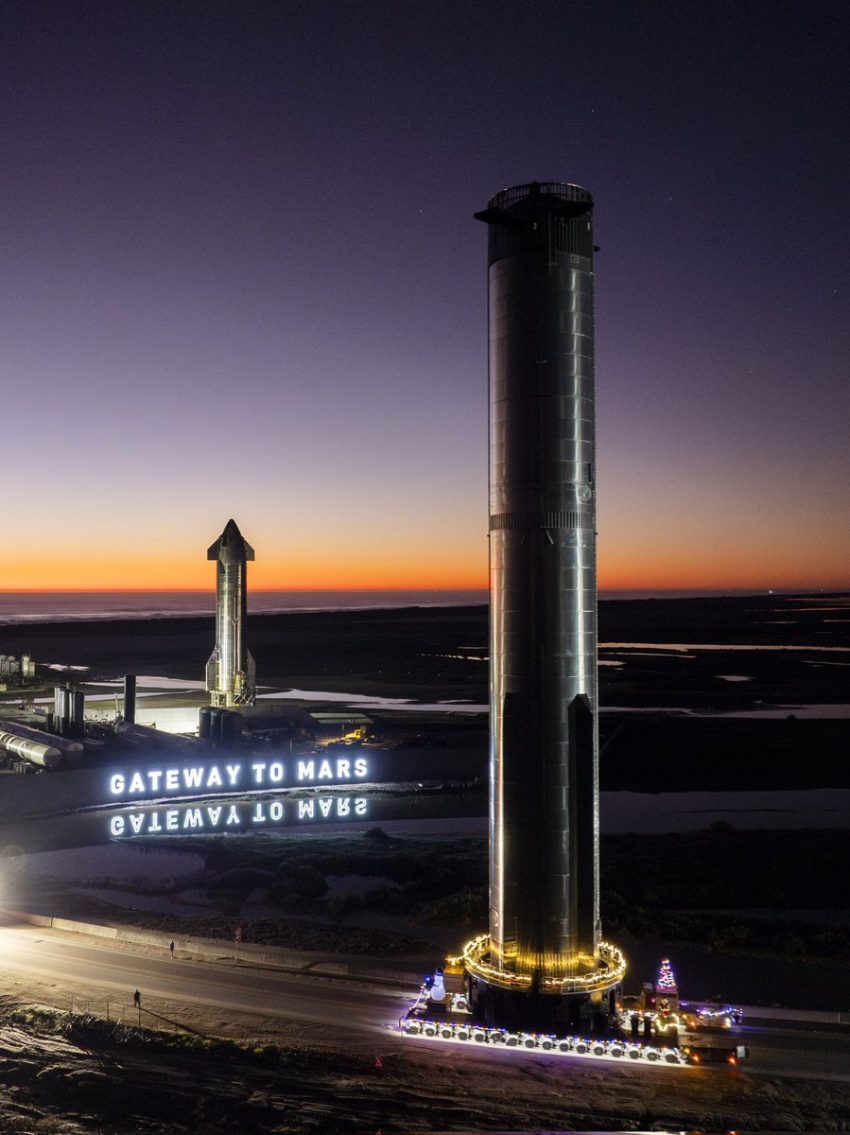SpaceX is fully stacked for the upcoming Starship Flight 5 launch scheduled for Sunday, October 13, 2024, with a launch window opening at 5:00 am PST. This launch will showcase improvements from its predecessors, focusing on achieving full reusability, a key factor in reducing the cost of space travel.
Starship, when paired with its Super Heavy Booster, forms a fully reusable system designed for a variety of space missions, from deploying satellites to enabling interplanetary travel.
The Starship system, comprising the Starship spacecraft and the Super Heavy Booster, stands at a towering 120 meters when fully stacked with a diameter of 9 meters. The Super Heavy Booster, alone, measures about 70 meters in height and, when fully fueled, weighs approximately 3,400 metric tons, powered by up to 33 Raptor engines. Conversely, the Starship itself is around 50 meters tall with a dry mass of 120 metric tons, capable of carrying payloads up to 100 metric tons into low Earth orbit.
The Mechazilla tower, designed for both launching and catching the booster, rises to about 146 meters, equipped with extendable arms intended to facilitate the precision capture of the descending booster. During its descent, the booster’s landing is meticulously engineered to reduce its speed from about 70 m/s to nearly zero for a gentle catch, ensuring reusability and operational efficiency.
It’s like trying to catch 50 elephants coming at you at more than 150 miles per hour.
The engineering needed to perfect this process is staggering.
The flight will test the system’s integration, focusing on the return and recovery methods for both the Starship upper stage and the Super Heavy Booster with an ambitious goal of capturing the booster using the Mechzilla mechanism on the launch tower, a technique pivotal for rapid reusability, and possibly required because of the size and design of the booster.
The Starship itself will attempt a controlled splashdown in the Indian Ocean, practicing precision landing after executing a series of complex maneuvers in space. The Starship did manage to make an aquatic landing during the last test flight.
Set to lift off from SpaceX’s in Boca Chica, Texas, the Starship will aim to achieve orbit and then re-enter Earth’s atmosphere. One main goal is to test the heat shield and flight control systems.
The launch itself takes weeks to prepare, with stacking and testing taking place in the days before FAA approval, which it received today.
We might see more launches from Texas and possibly some legal action from SpaceX given California’s recent declaration that Elon’s personal comments were a driving factor as to why the SpaceX bid to increase launch frequency was rejected. There have been ongoing discussions and hearings about the impact of increased rocket launches, including sonic booms, environmental pollution, and the effect on marine life. The Commission’s role is to balance the advancement of space technology with environmental conservation and public interests.
SpaceX is actively tackling environmental concerns through rocket reusability, cleaner fuel choices like methalox, and advanced water management systems to minimize ecological impact. Despite these efforts, they face ongoing public and legal scrutiny, pushing them to further engage with communities, adapt launch practices, and invest in sustainable technologies to align space exploration with environmental conservation.
While there was contention regarding the regulatory oversight and the extent to which SpaceX’s launches for private benefit should be treated under the umbrella of “federal agency activity,” this does not equate to a complete halt on launches but rather a call for clearer distinctions and possibly separate permits for commercial vs. federal missions.
Catch the flight here:
Watch Starship's fifth flight test https://t.co/LVrCnTv797
— SpaceX (@SpaceX) October 12, 2024


